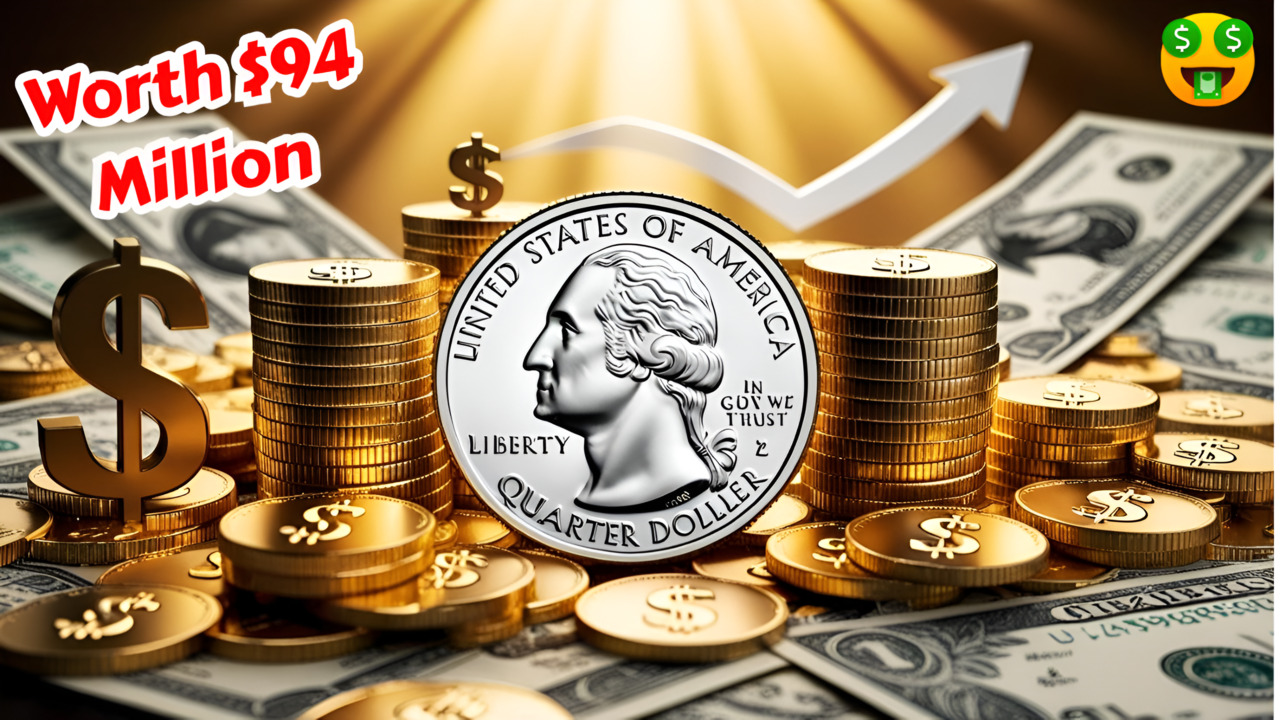Do you have a small fortune hiding in your spare change? If you’ve ever come across a Bicentennial quarter, you might be holding onto something far more valuable than just 25 cents. Some rare versions of these special coins are worth millions up to an astonishing $94 million! Read on to find out if you have one of these rare treasures and how to identify them.
The History of Bicentennial Quarters
Bicentennial quarters were minted in 1975 and 1976 to commemorate the 200th anniversary of American independence. Unlike regular quarters, these special coins feature a unique reverse design with a colonial drummer, created by artist Jack L. Ahr. The obverse still displays George Washington, but these coins are distinguishable by the dual date “1776-1976.”
Although millions were minted, certain rare variations have become highly valuable due to errors, special minting processes, or unique compositions.
What Makes These Bicentennial Quarters So Valuable?
Several factors determine the high value of specific Bicentennial quarters:
- Minting Errors: Misprints, double strikes, or off-center designs can make a coin rare and highly desirable.
- Material Composition: Some quarters were mistakenly struck on silver or other unique metals.
- Proof and Special Mint Sets: Limited edition proof sets or uncirculated coins increase in value over time.
- High-Grade Coins: Coins graded MS67 or higher by professional grading services can fetch astronomical prices at auctions.
Now, let’s explore five of the rarest Bicentennial quarters that could be worth up to $94 million.
1. The Double Die Obverse Bicentennial Quarter
One of the most sought-after varieties, the Double Die Obverse (DDO) quarter, features a noticeable doubling in the inscriptions and images. This error occurred during the minting process, creating a rare and valuable coin. Depending on the condition, a DDO Bicentennial quarter can be worth thousands or even millions of dollars at auction.
How to Spot It:
- Look for doubling in the words “LIBERTY” and “IN GOD WE TRUST.”
- Use a magnifying glass to detect minor doubling effects.
2. The Silver Bicentennial Quarter (40% Silver Error)
Although the U.S. Mint produced silver-clad Bicentennial quarters in special collector sets, some were mistakenly released into circulation. These quarters contain 40% silver instead of the usual copper-nickel composition, making them extremely rare and valuable.
How to Spot It:
- Weigh the coin silver quarters weigh slightly more than regular quarters (about 5.75 grams instead of 5.67 grams).
- Check for a white, silvery edge instead of the usual copper-colored band.
3. The Off-Center Strike Bicentennial Quarter
Off-center strike errors occur when a coin is not properly aligned during minting, causing part of the design to be missing or misplaced. The more dramatic the off-center error, the more valuable the coin becomes. Some off-center Bicentennial quarters have fetched over $500,000 at auctions!
How to Spot It:
- The design should appear shifted, with parts missing or placed awkwardly.
- Coins with an off-center strike of 50% or more are the most valuable.
4. The Overstruck Bicentennial Quarter on a Foreign Coin
One of the rarest and most valuable errors is the overstrike on a foreign coin. Sometimes, the U.S. Mint accidentally strikes a quarter design onto a coin blank from another country. These unique mistakes can be worth millions!
How to Spot It:
- Check for unusual colors, textures, or features that don’t belong on a U.S. quarter.
- If you notice odd shapes or letters underneath the quarter’s design, it might be an overstrike error.
5. The Deep Cameo Proof Bicentennial Quarter (Perfect Grade)
Proof coins are specially made for collectors with highly polished dies, creating a sharp and detailed finish. The rarest proof Bicentennial quarters have a deep cameo (DCAM) effect and a perfect MS70 grade. These flawless coins can command sky-high prices at auctions, sometimes reaching millions of dollars!
How to Spot It:
- The coin should have a highly reflective, mirror-like background with frosted details.
- It must be certified by a professional grading service as a MS70 DCAM.
How to Check if Your Bicentennial Quarter is Valuable
If you think you have a rare Bicentennial quarter, follow these steps:
- Examine the Coin Closely – Look for any errors, silver composition, or proof characteristics.
- Weigh It – Use a scale to check if it matches the weight of silver or clad versions.
- Check the Mint Mark – Coins minted in San Francisco (S) are usually proof sets, while Philadelphia (P) and Denver (D) struck regular versions.
- Compare with Auction Records – Look up recent sales of rare quarters to see if yours matches any valuable types.
- Get It Graded – Send your coin to a professional grading service like PCGS or NGC to authenticate its rarity and value.
Final Thoughts: Could You Be a Millionaire?
It might sound unbelievable, but some Bicentennial quarters are truly worth millions! If you have any 1776-1976 quarters lying around, it’s time to inspect them carefully. Who knows? You might just be holding a piece of American history worth a life-changing fortune.
So, go check your pockets, old piggy banks, and coin jars you could be sitting on a gold mine!
Have You Found a Rare Bicentennial Quarter?
Let us know in the comments if you’ve discovered a special quarter, or if you have any questions about your coin collection!


